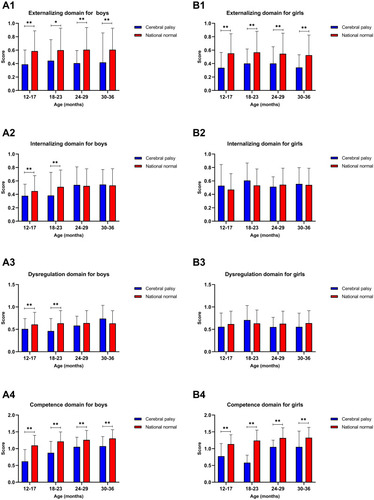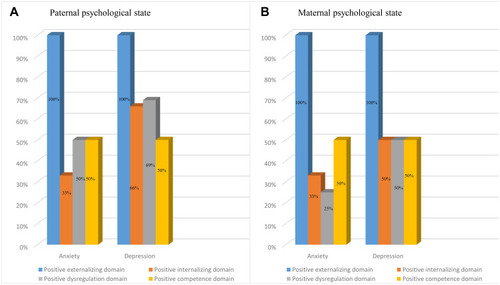Figures & data
Table 1 Basic Information on Children with Cerebral Palsy (n=300)
Figure 1 Comparison of the scores of each dimension of social-emotional development in children with cerebral palsy (CP) and the national normal. (A1–A4) Scores of externalizing, internalizing, dysregulation, and competence domains for boys with CP and the national normal, respectively. (B1–B4) Scores for the externalizing, internalizing, dysregulation, and competence domain for girls with CP and the national normal, respectively. All data are represented by mean ± SD values. *Indicates p < 0.05 and **p < 0.01.

Table 2 The Effect of General Clinical Features of Children with Cerebral Palsy on the Score of the Social-Emotional Development Scale
Table 3 The Effect of Family Social Demographic Characteristics on the Score of Social Emotional Development for Children with Cerebral Palsy
Table 4 The Relationship Between Parental Coping Styles and Positive Detection Rates
Figure 2 The effect of parental anxiety and depression on the positive detection rate of social emotional development in children with cerebral palsy (CP). (A) Correlations between paternal psychological state (anxiety and depression) and the positive detection rate of each domain for social emotional development in children with CP. (B) Correlations between the maternal psychological state (anxiety and depression) and the positive detection rate of each domain for social emotional development in children with CP.

Table 5 Multivariate Logistic Regression Analysis of Independent Risk Factors for the Positive Domains of Children with Cerebral Palsy
